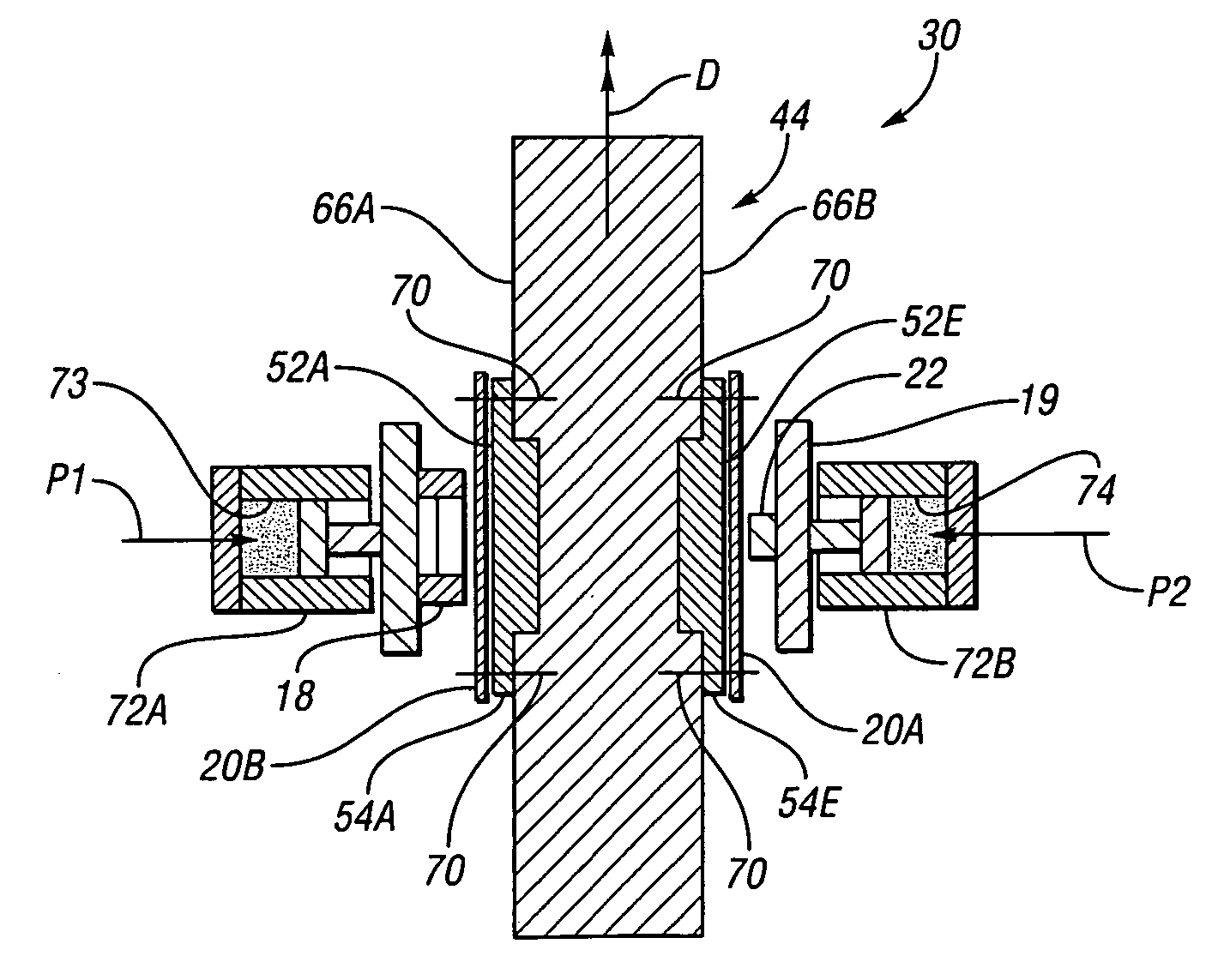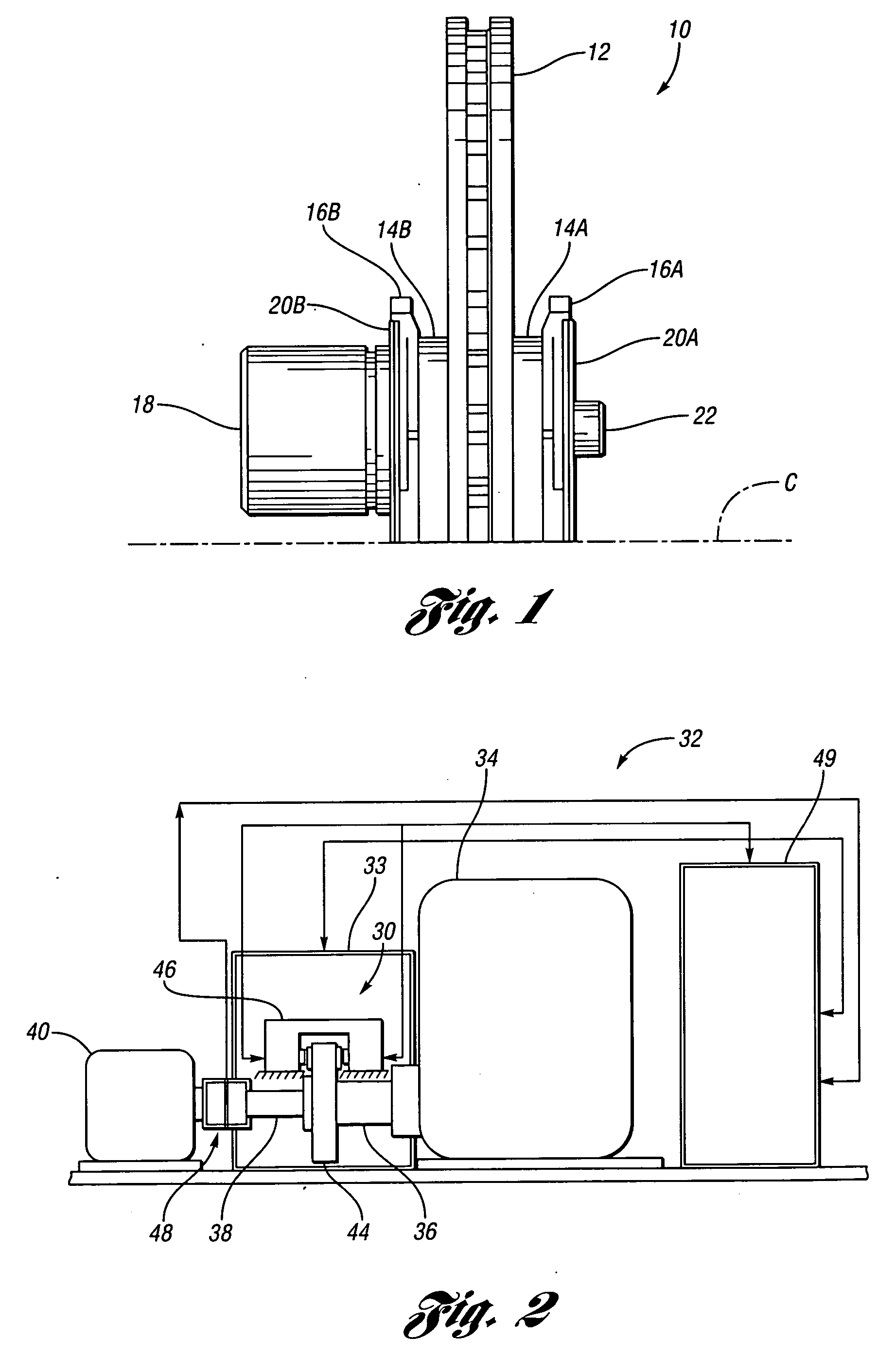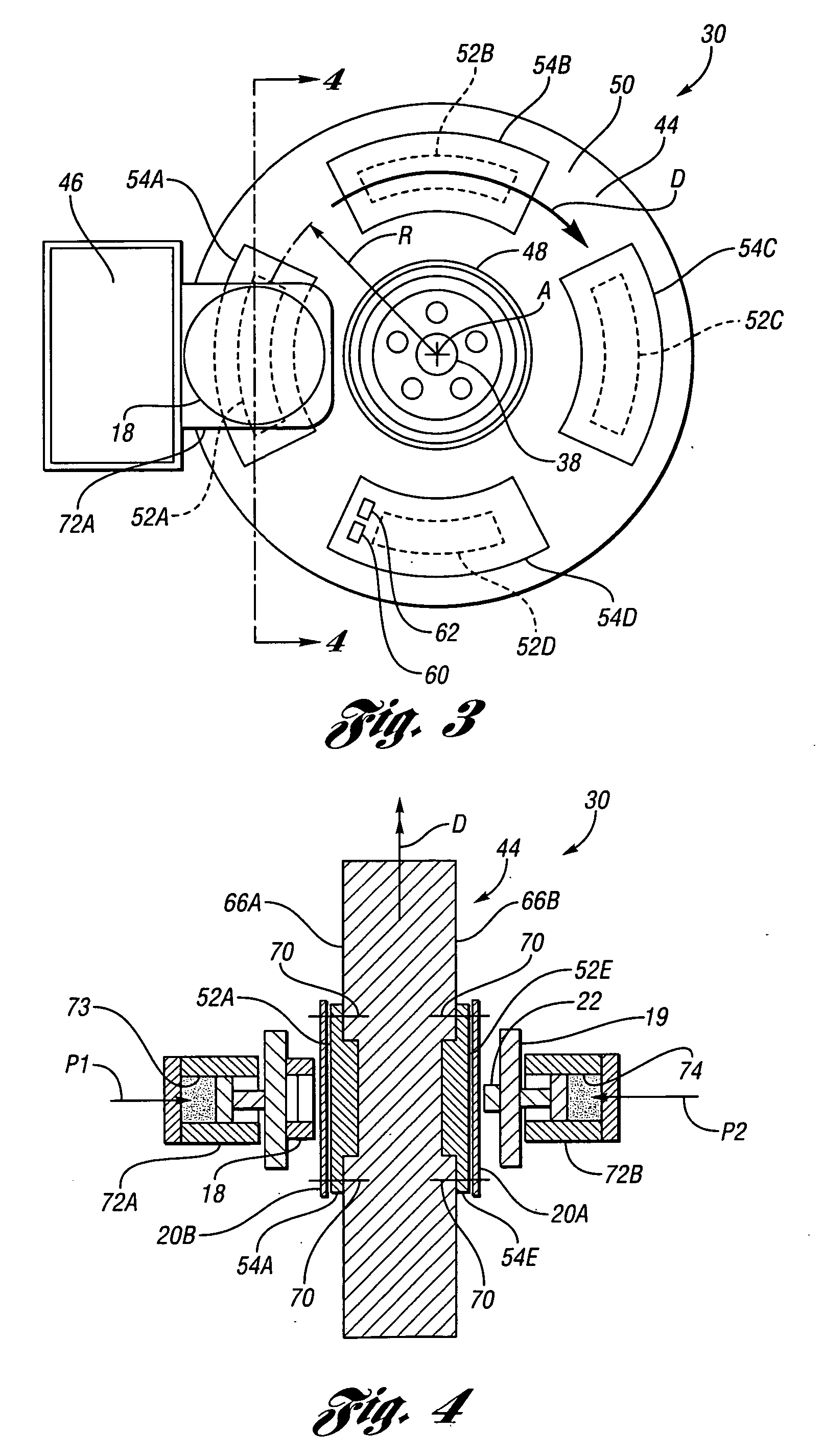Test apparatus and method of measuring surface friction of a brake pad insulator material and method of use of a brake dynamometer
a technology of brake pad insulator material and test apparatus, which is applied in the direction of measuring devices, instruments, scientific instruments, etc., to achieve the effect of convenient testing and measuremen
- Summary
- Abstract
- Description
- Claims
- Application Information
AI Technical Summary
Benefits of technology
Problems solved by technology
Method used
Image
Examples
Embodiment Construction
[0026] Referring to the drawings, wherein like reference numbers refer to like components, FIG. 1 shows a typical automotive disk brake assembly 10. The disc brake assembly 10 includes a disk rotor 12 rotating about a center line C. The rotor 12 will be operatively connected to a wheel that also rotates about center line C, as is well understood by those skilled in the art. An inner disk brake pad 14A and an outer disk brake pad 14B are axially moveable via brake piston 18 into contact with the disk rotor 12 for braking the rotor 12 and, thereby, the wheel. Each of the brake pads 14A, 14B is of a selected frictional material. Each brake pad 14A, 14B has a respective metal backing plate 16A, 16B adhered or otherwise connected to it outward of the brake disk rotor 12. Brake pad insulator material 20A, 20B, also referred to herein as damping material, is applied to the outer side of each respective of the backing plates 16A, 16B. The brake pad insulator material 20A, 20B may be multi-l...
PUM
 Login to View More
Login to View More Abstract
Description
Claims
Application Information
 Login to View More
Login to View More - R&D
- Intellectual Property
- Life Sciences
- Materials
- Tech Scout
- Unparalleled Data Quality
- Higher Quality Content
- 60% Fewer Hallucinations
Browse by: Latest US Patents, China's latest patents, Technical Efficacy Thesaurus, Application Domain, Technology Topic, Popular Technical Reports.
© 2025 PatSnap. All rights reserved.Legal|Privacy policy|Modern Slavery Act Transparency Statement|Sitemap|About US| Contact US: help@patsnap.com



